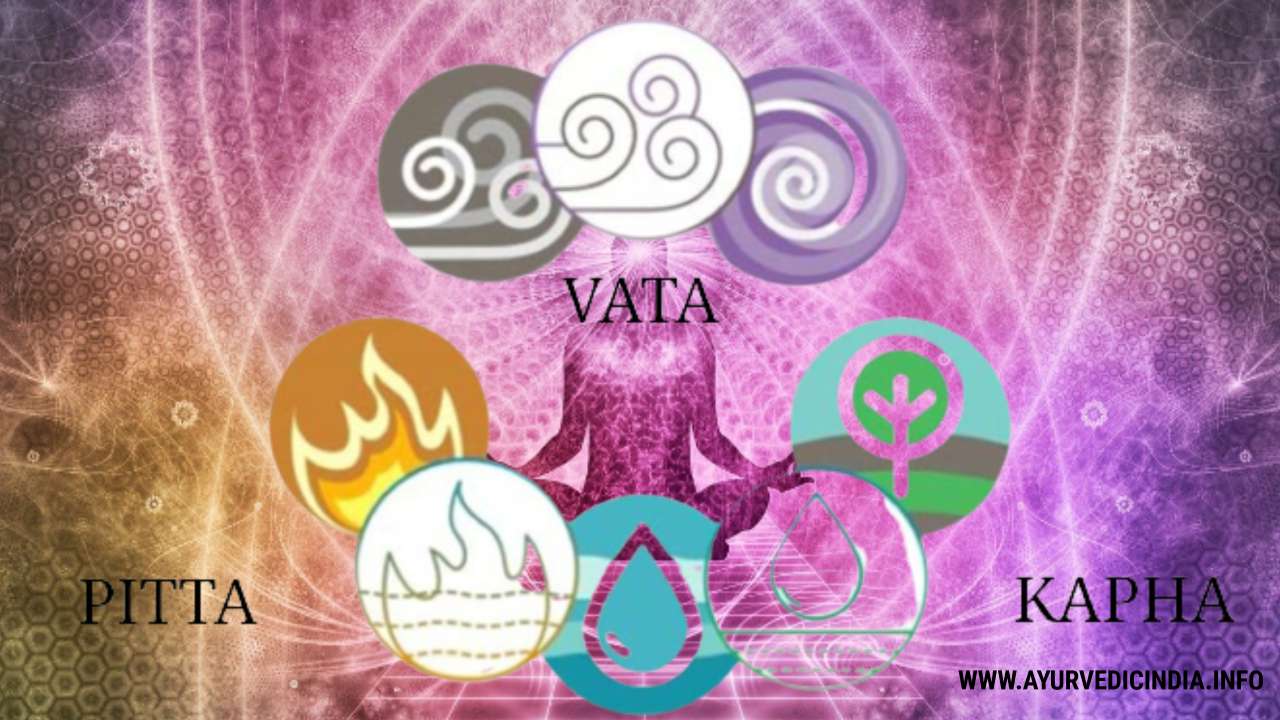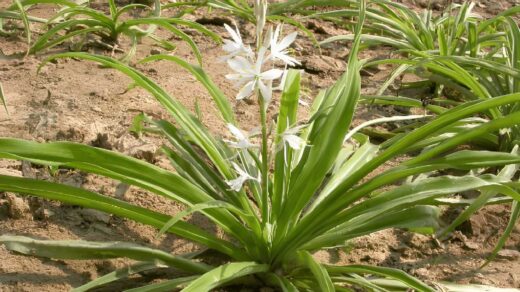Ayurveda Doshas: Vata, Kapha, Pitta With Diet, Lifestyle and More
Ayurveda, one of the world’s oldest holistic healing systems, remains widely practiced today. It embraces a holistic approach, integrating physical, psychological, and spiritual elements to promote overall well-being. At the core of Ayurveda lies the concept of “doshas,” which are believed to determine an individual’s personality and health.
The term “Ayurveda” translates to “the science of life” in English, reflecting its comprehensive nature. However, the validity of doshas as a scientific concept has been questioned by many healthcare professionals due to a lack of empirical evidence supporting their existence.
According to Ayurveda, there are three primary doshas: Vata, Pitta, and Kapha. Each dosha is associated with specific physical and psychological traits, and the balance of these doshas in an individual is thought to play a crucial role in their health and well-being.
Ayurvedic practitioners believe that identifying your dominant dosha and adopting dosha-specific health practices can lead to balance and well-being. These practices often involve dietary choices, lifestyle adjustments, and herbal remedies tailored to your dosha type.
Ayurveda Elements and Doshas
Ayurveda, a traditional system of medicine, is founded on the belief that the world comprises five elements: space (aakash), water (jala), earth (prithvi), fire (teja), and air (vayu). These elements combine to create three essential humors or doshas: vata, kapha, and pitta. According to Ayurveda, these doshas govern a person’s physical, mental, and emotional well-being.
Each individual is thought to possess a unique combination of these doshas, with one typically dominating the others. For instance, one person may have a predominant pitta dosha, while another might lean more towards vata. To determine your dosha profile, you can seek guidance from an Ayurvedic practitioner.
This unique dosha composition is believed to define an individual’s Ayurvedic constitution, serving as a blueprint for achieving optimal health and balance in life.
What is Kapha Dosha?
Kapha dosha is one of the three primary doshas in Ayurveda, and it is associated with the elements of water and earth. The nature of Kapha is characterized by several qualities, including being slow, moist, cool, heavy, smooth, oily, and steady.
In addition to these physical characteristics, Kapha also embodies certain qualities in the mind and body, such as lubrication, stability, and structure. In Ayurvedic philosophy, individuals with a predominant Kapha dosha tend to exhibit physical and mental traits that align with these qualities.
They may have a sturdy and well-built physical constitution, with smooth and radiant skin. They often have a calm and steady temperament, with a natural inclination toward patience and stability.
However, when Kapha becomes excessive or imbalanced in an individual, it can lead to various health issues. Excess Kapha may manifest as weight gain, lethargy, congestion, and emotional sluggishness.
Therefore, Ayurvedic practices often focus on balancing the doshas, including Kapha, through dietary and lifestyle adjustments, herbal remedies, and other holistic approaches to maintaining optimal health and well-being.
The Innate Nature of the Doshas
Understanding the qualitative nature of the three primary doshas in Ayurveda: Vata, Pitta, and Kapha, is essential for comprehending how they influence an individual’s constitution.
1. Vata Dosha: Vata is primarily composed of the elements air and space. As a result, it possesses qualities such as dryness, coldness, roughness, lightness, clarity, mobility, and subtlety. When Vata is dominant in a person’s constitution, it tends to manifest as a body type characterized by these qualities.
2. Pitta Dosha: Pitta is composed of the elements fire and water, giving it qualities like heat, lightness, sharpness, oiliness, liquidity, and mobility. Individuals with a predominant Pitta dosha typically exhibit physical and mental characteristics that align with these qualities.
3. Kapha Dosha: Kapha is formed from the elements earth and water, which impart qualities of heaviness, slowness, smoothness, oiliness, softness, stability, and cloudiness to this dosha. Those with a dominant Kapha dosha tend to have a constitution characterized by these attributes.
What Are the Three Doshas in Ayurveda
- Vata: is the fusion of space and air.
- Pitta: is the combination of fire and water.
- Kapha: is the combination of water and land.
1. Vata Personality Type
The Vata body type is characterized by a predominant Vata dosha, with individuals displaying more qualities and characteristics associated with Vata. People with a Vata Ayurvedic body type are typically slim and full of energy. They tend to possess creative thinking skills and have the ability to think outside the box. Their mood can often be influenced by factors such as the weather and the food they consume. Here are some prominent qualities of the Vata body type:
Positive Qualities of the Vata Body Type:
1. Quick learners: Vata individuals have a natural aptitude for grasping new information quickly.
2. Creative-minded: They often exhibit creativity and innovative thinking.
3. Multitasking ability: Vata types can efficiently handle multiple tasks at once.
4. Kind by nature: They tend to be compassionate and caring.
5. Flexibility: Vata individuals are adaptable and flexible in their approach to life.
6. Slim physique: They typically have a slender build.
Challenges Associated with the Vata Constitution:
1. Emotional turmoil: Vata types may experience emotional ups and downs.
2. Susceptibility to anxiety: They can be more prone to feelings of anxiety and nervousness.
3. Sensitivity to cold weather: Vata individuals may find cold weather uncomfortable.
4. Variable appetite and digestive concerns: Their appetite and digestion may fluctuate, leading to occasional digestive issues.
5. Poor blood circulation: They may face challenges related to blood circulation.
6. Sleep concerns: Vata individuals may have difficulties with sleep patterns.
Balancing the Vata dosha through dietary and lifestyle adjustments, as well as mindfulness practices, is a key aspect of Ayurvedic wellness for individuals with a Vata body type. This helps promote stability, reduce anxiety, and maintain overall health and well-being.
2. Pitta Personality Type
The Pitta body type is characterized by a combination of the fire and water elements, resulting in individuals who are typically athletic and well-built. They often exhibit strong leadership qualities and a natural drive to achieve their goals. Here are some notable characteristics of the Pitta body type:
Positive Qualities of the Pitta Body Type:
1. Intelligence: Pitta types are often highly intelligent and quick-witted.
2. Quick learners: They have a natural ability to grasp new concepts rapidly.
3. Motivated and goal-oriented: Pitta individuals are driven to achieve their objectives.
4. Strong leadership qualities: They often excel in leadership roles and decision-making.
5. Good circulatory system: Pitta types tend to have a healthy circulatory system.
6. Good metabolism: They typically have an efficient metabolism.
7. Healthy skin and hair: Their skin and hair often have a healthy and radiant appearance.
8. Determined and tenacious: Pitta individuals display determination and perseverance.
Challenges Associated with the Pitta Constitution:
1. Lack of patience: They may have a tendency to be impatient at times.
2. Quick to conflicts: Pitta types might engage in conflicts more readily.
3. Hunger pangs and mood swings: They can experience sudden hunger and mood fluctuations.
4. Sensitivity to hot weather: Pitta individuals may find hot weather uncomfortable.
5. Common health concern: Inflammation is a frequent health issue faced by those with a Pitta constitution.
Balancing the Pitta dosha through a diet and lifestyle that emphasizes cooling and calming practices is important for maintaining well-being. This can help manage the potential challenges associated with their constitution and ensure overall health and harmony.
3. Kapha Personality Type
The Kapha body type is characterized by a combination of the earth and water elements, which gives individuals a grounded and stable nature. They are often seen as powerful and caring individuals who not only accomplish their own tasks but also provide support and help to others. Here are some typical qualities associated with the Kapha body type:
Positive Qualities of the Kapha Body Type:
1. Caring and empathetic: Kapha individuals are naturally compassionate and show empathy towards others.
2. Trusting: They tend to trust others easily and have a nurturing demeanor.
3. Calm, composed, and patient: Kapha types are known for their ability to remain calm and patient in various situations.
4. Wise and mature: They often exhibit wisdom and maturity beyond their years.
5. Happiness: Kapha individuals usually have a cheerful disposition.
6. Strong bones and joints: Their physical structure often includes strong bones and joints.
7. Strong immunity: Kapha types typically have a robust immune system.
Challenges Associated with the Kapha Constitution:
1. Slow metabolism: Their metabolism tends to be sluggish, which can lead to feelings of lethargy.
2. Weight gain: Kapha individuals may gain weight more easily than others.
3. Oversleeping: They have a tendency to oversleep, which can affect their energy levels.
4. Respiratory concerns: Kapha types are more prone to respiratory issues.
5. Higher risk of heart diseases: They may have an increased risk of heart-related health problems.
6. Need for motivation: Kapha individuals may require external motivation and support to stay active and engaged, and they can be susceptible to periods of depression.
Balancing the Kapha dosha involves adopting a lifestyle and dietary choices that promote warmth, energy, and stimulation. This helps counteract the potential challenges associated with their constitution, ensuring overall well-being and vitality.
The Ayurvedic Diet is Based on the Doshas
The Ayurvedic diet is based on the concept that tailoring your food choices to your dosha can help balance your dosha and promote optimal health, although there is limited scientific evidence supporting this idea. Here’s a breakdown of recommended foods for each dosha and foods to avoid:
Vata Dosha:
Foods to eat: Warm, “moist,” and soft foods, including berries, bananas, peaches, cooked vegetables, oats, brown rice, lean meats, eggs, and dairy.
Foods to avoid: Bitter, dried, and cold foods, such as raw vegetables, cold desserts, dried fruits, nuts, and seeds.
Kapha Dosha:
Foods to eat: Spicy, acidic, and filling foods, such as most fruits and vegetables, whole grains, eggs, low-fat cheese, unprocessed meats, and hot spices.
Foods to avoid: Heavy and “fatty” foods, including fats, oils, processed foods, nuts, and seeds.
Pitta Dosha:
Foods to eat: Light, cold, sweet, and energizing foods, including fruits, non-starchy vegetables, oats, and eggs.
Foods to avoid: Heavy, spicy, and sour foods, such as red meat, potatoes, and hot spices.
It is recommended that individuals feeling unbalanced should avoid foods that are similar to their dominant dosha. Furthermore, Ayurvedic dietary guidelines may suggest adapting your diet according to the changing seasons, such as consuming warmer foods in the winter.
What Exercises Are Good for Dosha?
Exercise recommendations in Ayurveda are often tailored to an individual’s dosha, but it’s important to note that scientific evidence supporting the effectiveness of these specific recommendations is limited. Here are exercise guidelines based on the different doshas:
For Vata Dosha:
Vata-dominant individuals are often on the move and benefit from activities involving constant movement. Recommended exercises include cycling, running, walking, yoga, and tai chi. These activities can help balance the restless nature of Vata.
For Kapha Dosha:
Kapha individuals tend to benefit from a combination of cardiovascular exercises and weight-resistance training. Having a workout buddy can help keep them motivated. However, any form of movement is beneficial for this dosha, as it helps counter their inherent tendency toward sluggishness and weight gain.
For Pitta Dosha:
Pitta-dominant individuals should avoid exercising in the heat, as they tend to push themselves too hard. Instead, they can engage in activities like team sports, which align with their natural competitiveness. Choosing cooler times of the day for exercise is advisable for Pitta types.
While Ayurveda suggests exercise recommendations based on dosha, it’s essential to recognize that scientific research primarily supports the benefits of slow, gentle movements such as yoga and tai chi. These practices have been associated with various health benefits, including improved quality of life, physical fitness, and stress management.
Lifestyle Practices Recommendations for Doshas
Ayurvedic medicine promotes a holistic approach to healing, encompassing physical, mental, and emotional well-being. This holistic approach includes various lifestyle practices aimed at promoting overall health. Some of these practices include:
1. Yoga: Yoga is a well-known practice in Ayurveda that combines physical postures, breath control, and meditation to enhance flexibility, strength, and mental clarity.
2. Meditation: Meditation techniques are often recommended to promote mental clarity, reduce stress, and improve emotional balance.
3. Mindful Eating: Ayurveda emphasizes the importance of mindful eating, focusing on the quality and manner in which you consume food.
4. Sleep Hygiene: Ensuring good sleep habits and a restful sleep environment is considered essential for maintaining overall health.
5. Social Connection: Spending time both in solitude and with others is encouraged in Ayurvedic practice to support emotional and mental balance.
6. Work-Life Balance: Striking a balance between work and personal life is essential for reducing stress and promoting well-being.
In Ayurveda, it is recommended to establish a daily routine that incorporates these healthy lifestyle practices. This routine is believed to align an individual with the elements and contribute to good health. However, it’s important to note that scientific evidence supporting the specific influence of Ayurvedic elements and routines is limited.
Research has shown that daily routines and pre-planning can indeed lead to healthier lifestyle habits, including regular exercise, balanced nutrition, and improved sleep quality. Additionally, practices like mindfulness and meditation have been associated with reduced stress levels, enhanced quality of life, increased creativity, and improved decision-making abilities.
References:
- Bridging Ayurveda with evidence-based scientific approaches in medicine(1)
- A glimpse of Ayurveda – The forgotten history and principles of Indian traditional medicine(2)
- Understanding personality from Ayurvedic perspective for psychological assessment: A case(3)
- Relationships among classifications of ayurvedic medicine diagnostics for imbalances and western measures of psychological states: An exploratory study(4)
- Dosha brain-types: A neural model of individual differences(5)

























